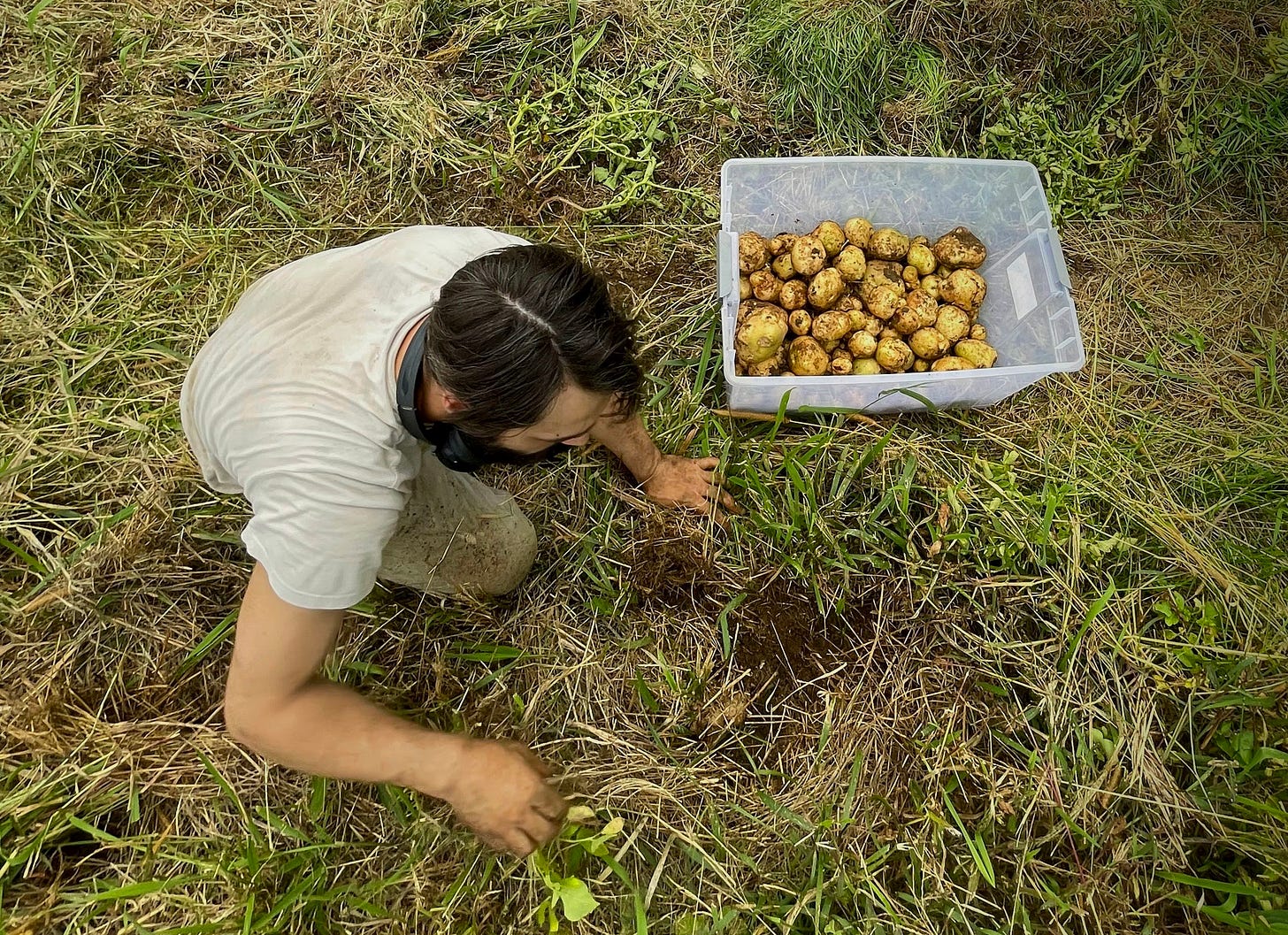A poem about soil
Why we don't say the word "dirt" around here.
During my junior year of college, Skidmore started a student-run garden. As a newly-declared environmental studies major (I entered my undergraduate career a lifelong student of art and pre-declared studio art major, but switched halfway through my four years when an unshakable responsibility to the planet insisted on keeping me up at night in my dorm room), this was my first experience with growing food. Having been raised in a New York City suburb, the closest I’d come to gardening was helping my maternal grandmother, DeeDee, with her potted Impatiens, or going with my mom to pick out hanging Lantana at the local garden center. One time, in elementary school, I planted a sunflower that grew above my head. It’s safe to say that it was for a science project, and my thumb did not turn green that day.
While I did my best to participate in the student garden at Skidmore, I spent that spring studying abroad in Costa Rica, and the following year consisted of an overwhelming amount of senior-year commitments, both academic and social. It wasn’t until I was 27 that I took a bona fide interest in growing things—and I say “things” because I had no idea what I wanted to grow, or more importantly, how. I heard that a new initiative was starting in Saratoga that included a community garden, so I decided to attend an information session at the public library. I don’t necessarily think of myself as an “old soul” but I was the youngest person at the meeting by several decades. I didn’t care. This was something I had a deep calling to pursue—be it because of my education or my brief exposure in college or because I’d been studying mindfulness and knew of gardening as parallel practice—so I put my name down and paid for my 4x8 raised bed. I was one of the first gardeners at Pitney Meadows Community Farm, and I had no idea what I was doing.
I quickly learned from the community garden manager, a wonderful Master Gardener named Natalie, about pruning basil, the persistence of powdery mildew, and how much I sincerely did not need to plant three kinds of tomatoes (I couldn’t keep up with the cherries, and watching them die on the vine crushed me). I’d bike to the farm from my downtown apartment and sometimes sit there for hours. Whether I was being productive or not was irrelevant; I had fallen in love with the feeling of soil air-drying on my fingers and the meditative act of weeding (I still enjoy weeding, which I’ve come to learn is an oddity in the farming community). I volunteered during harvest and helped teach a painting class for children. I was even asked to speak at the country’s longest-operating folk music venue and local treasure, Caffe Lena about how the experience helped me cope with vision loss, and local musician Bob Warren wrote a song about it.

I am fairly science-averse and have forever excelled in subjects like literature, history, and the arts over anything S.T.E.M. related. I said I majored in environmental studies, not environmental science (yes, these are different paths), so my research, reading, and writing, even in graduate school, focused on qualitative, rather than quantitative, topics and inquiries. So, other than buying compost for spring planting and using my parents’ pile of pine needles as mulch, I didn’t engage in a lot of discussion around soil health; time at my garden plot was largely spent thinking about food growing from the soil, rather than the soil itself.
When I met my husband just before my third year of gardening, that quickly changed. From him, I learned that soil is the most critical part of growing anything. He taught me about inputs needed to make soil more productive or more suitable for a type of plant. From him, I learned that soil is a complete and self-sustaining ecosystem made up of organic matter, minerals, and living organisms like worms, fungi, microbes, and bacteria. I’d never seen a grown man (or woman) get so happy at the sight of earthworms, previously reserving this celebration solely for 5-year-olds. From him, I first heard “soil!” spoken as a corrective term for “dirt.” That’s because soil is alive, whereas dirt is dead—you cannot grow anything from dirt.
A few years back, when Kyle was starting what is now his farm, I wrote this poem about my new relationship—and our larger, more universal relationship—to soil. I hope you enjoy it.
Dirt
All goes back to the earth, he said as twelve yards of compost rolled off the back of a truck and into the back field. He kneeled to sift through, looking not for treasures but texture, while I broad-forked decomposed remnants of last year’s harvest to prevent a lifeless land. Pumping air into layers below a sort of CPR for the soil. Golden hour hits the western hill and I hear a dying voice as my shirtsleeve wipes away a damp female mustache. The echo rolls off curved, cleared plots where manure fertilizes hay that will be fed to cows who will be killed for summer barbecues. Everything we are is because of death, I think as my hands reach down to break up clods of roots, weeds, worms, waste, Probably eggs as a frog leaps out of the hole left behind. It is an ecosystem the size of a baseball and I remember why “dirt” is a forsaken word here.



